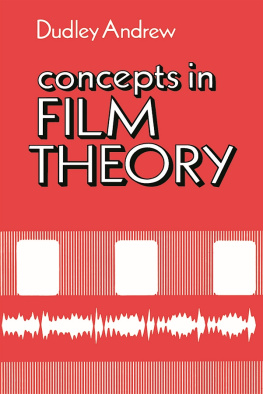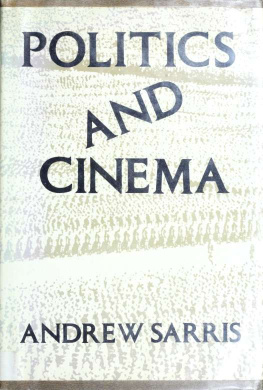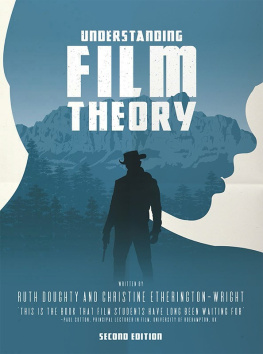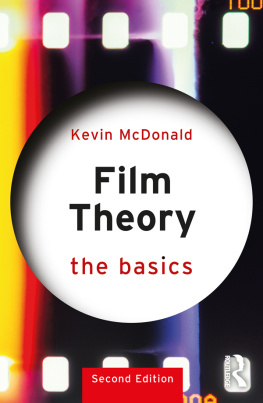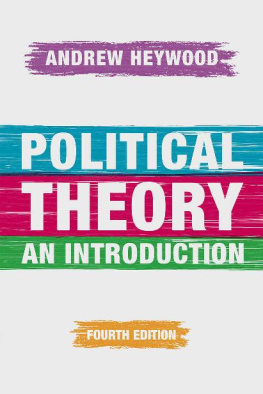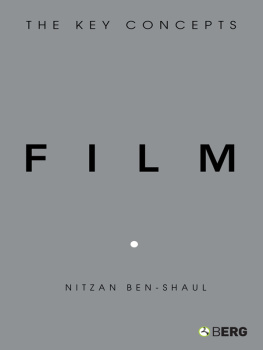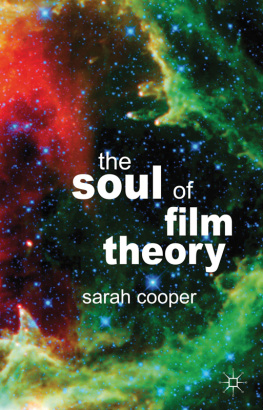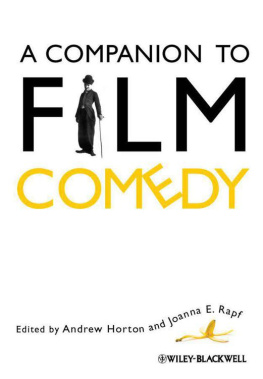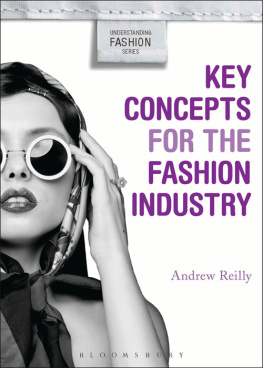Andrew - Concepts in Film Theory
Here you can read online Andrew - Concepts in Film Theory full text of the book (entire story) in english for free. Download pdf and epub, get meaning, cover and reviews about this ebook. City: Oxford, year: 1984;2015, publisher: Oxford University Press, genre: Romance novel. Description of the work, (preface) as well as reviews are available. Best literature library LitArk.com created for fans of good reading and offers a wide selection of genres:
Romance novel
Science fiction
Adventure
Detective
Science
History
Home and family
Prose
Art
Politics
Computer
Non-fiction
Religion
Business
Children
Humor
Choose a favorite category and find really read worthwhile books. Enjoy immersion in the world of imagination, feel the emotions of the characters or learn something new for yourself, make an fascinating discovery.
- Book:Concepts in Film Theory
- Author:
- Publisher:Oxford University Press
- Genre:
- Year:1984;2015
- City:Oxford
- Rating:5 / 5
- Favourites:Add to favourites
- Your mark:
- 100
- 1
- 2
- 3
- 4
- 5
Concepts in Film Theory: summary, description and annotation
We offer to read an annotation, description, summary or preface (depends on what the author of the book "Concepts in Film Theory" wrote himself). If you haven't found the necessary information about the book — write in the comments, we will try to find it.
Concepts in Film Theory — read online for free the complete book (whole text) full work
Below is the text of the book, divided by pages. System saving the place of the last page read, allows you to conveniently read the book "Concepts in Film Theory" online for free, without having to search again every time where you left off. Put a bookmark, and you can go to the page where you finished reading at any time.
Font size:
Interval:
Bookmark:

Dudley Andrew
OXFORD UNIVERSITY PRESS
Oxford New York Toronto Melbourne
1984
OXFORD UNIVERSITY PRESS
Oxford London Glasgow
New York Toronto Melbourne Auckland
Delhi Bombay Calcutta Madras Karachi
Kuala Lumpur Singapore Hong Kong Tokyo
Nairobi Dar es Salaam Cape Town
and associate companies in
Beirut Berlin Ibadan Mexico City Nicosia
Copyright 1984 by Oxford University Press, Inc.
First published by Oxford University Press, New York, 1984
First issued as an Oxford University Press paperback, 1984
Library of Congress Cataloging in Publication Data
Andrew, James Dudley, 1945
Concepts in film theory.
Bibliography: p.
Includes index.
1. Moving-picturesPhilosophy. I. Title.
PN1995.A49 1984 791.4301 83-17365
ISBN 0-19-503394-9
ISBN 0-19-503428-7 (pbk.)
Versions of several chapters of this book received prior publication as follows: Chapter 1 in Research Opportunities in Film, ed. Herbert Bergman (East Lansing, Michigan: Film Research Center Publication, 1981); Chapter 5 in The Horizons of Literature, ed. Paul Hernadi (Lincoln: University of Nebraska, 1982); Chapter 6 in Narrative Strategies: Original Essays in Film and Prose Fiction, ed. Syndy Conger and Janice Welsh (Macomb, Illinois: Western Illinois University Press, 1981); Chapter 9 in Iris 1, no. 1 (Spring 1983); and Chapter 10 in the MMLA Bulletin 15, no. 1 (Spring 1982).
Printing (last digit): 9
Printed in the United States of America
To
Brigid, Ellen, and James
Certainly in some sense this volume is a sequel to The Major Film Theories, for it begins in 1965, virtually where that earlier book left off. Just as Jean Mitry was seen there as the culminating figure of the classic era, so here he is situated at the outset of the modern era. Because film theory has grown so institutionalized, taken up as it has been in universities, promulgated in professional societies and at academic conferences, advanced in dissertations and in specialized journals, it seems proper to approach it through topics rather than through careers of individuals. Of course this limits my discussion to those issues that obsess our journals, conferences, and seminars. Maverick thinkers, some perhaps of lasting importance, are perforce left unheard in such a survey of recent trends. But I do not apologize for this, since more than mere convenience has urged this strategy. It is my belief, argued throughout this text in its method as well as in its propositions, that film theory exists as a discourse among theorists and with films. Hence I have gone straight to the noisiest corners of that discourse and have sought to make sense of the yelling and the whispers overheard there.
Are the topic headings sufficient to circumscribe this babble of modern theory? They are meant to be, and the reader is challenged to locate significant omissions along the way. Within the discussion of each topic, however, no pretense to completeness can be claimed. I present the arguments that most disturb or inspire me, and whenever useful, adduce enough background to situate a given film problem within its proper intellectual tradition.
All this is properly antecedent to the books barely submerged and chief concern: to express, through a dialogue with the theories of the day, my own views on each particular concept and, more ambitious still, my own sense of the interdependence of these concepts. No doubt my predilections are readily discernable to the critical reader of The Major Film Theories, but there I struggled to let the figures I selected betray their insights and conundrums on their own. The present volume, for several reasons, is different. First, no names in todays theory are printed quite so luminously as to compel deference to their ideas, for this is genuinely an age of schools of thought more than of lone geniuses. Second, history has yet to sanctify or excuse the discourse of our era and everyone can feel freer with it than with the canonized systems of the past, no matter how far we may think to have outstripped them. Third, my own thoughts about film have matured exactly during the era this book chronicles. This is the theory generated in the institutions which have supported me, and I am happy as well as obligated to take a forthright stance within it. Nor is it treacherous to conclude, as I will, that the era of pure theory is over and that the task before us consists in confronting film concepts not with logic or with paradigms derived from other fields, but with exemplary films and sequences of films. To claim, as I also will, that theory must be led in some respects by criticism, history, and analysis, is an important theoretical claim. In a current volume I try to make good on that claim (Film in the Aura of Art, Princeton University Press, 1984).
Obviously the honesty as well as utility of this book is imperiled by a number of factors: an admittedly incomplete survey of the available positions, the tendentious way this survey conforms to my view, and the absence in this text of the kind of film analysis called for by the argument. Enter the Classified Bibliography. Great care has been taken to select enough citations relevant to each chapter to permit the responsible enthusiast to pursue the arguments initiated in this text far beyond the limited and parochial attention they receive in a book of this size.
While many items in the Bibliography may challenge my position, I look upon the Bibliography in toto as an ally. For I will be satisfied when any reader, stimulated by the arguments presented here, or by my personal assessment of those arguments, or even by the enticing titles in the Bibliography, recognizes that the concepts isolated in this book are anything but isolated, and can begin to see them as part of the history of ideas, as part of contemporary intellectual life, as part of an overarching view I am indirectly tracing, or, most important, as part of the questioning of the medium that goes on within the work of films themselves. I will be satisfied, I say, because the discourse initiated in such recognitions is one with the discourse of this book. It is in fact the very discourse we label Film Theory.
| Iowa City May 1983 | D. A. |
Film theory, I begin by saying, is now an institutional endeavor. Let me then thank the University of Iowa for the time it has given me through its Faculty Scholar program and the National Endowment for the Humanities for its summer support. In fact, this series of essays took shape during the NEH Summer Seminar I offered in 1977. To its dozen clever and enthusiastic participants as well as to my assistant in that seminar Mary Ann Doane I owe the impulse to have my say in matters of contemporary film theory. Mary Ann contributed further with comments on particular chapters, as did Dennis Giles and Jacques Aumont. Ana Lopez with the aid of Dana Benelli, Andra Staskowski, Robert Arnold, and Daryl Iogha, organized the Bibliography. To all these I am indebted but to none more than Pamela Falkenberg, the closest and most generous reader I have had. While subscribing to few of my ideas, she brought me to test and then to express them as forcefully as possible. In a way her sympathetic intelligence exemplifies the premise of my methodology, that film theory fulfills its mission not when transcendental logic or external system steps in to make sense of the flux of film life, but when the encounters we have with films and ideas urge us to adjust ourselves so that we can fully hear them, truly understand what they might have to say, and in understanding them, understand ourselves and what we might be.
Next pageFont size:
Interval:
Bookmark:
Similar books «Concepts in Film Theory»
Look at similar books to Concepts in Film Theory. We have selected literature similar in name and meaning in the hope of providing readers with more options to find new, interesting, not yet read works.
Discussion, reviews of the book Concepts in Film Theory and just readers' own opinions. Leave your comments, write what you think about the work, its meaning or the main characters. Specify what exactly you liked and what you didn't like, and why you think so.

